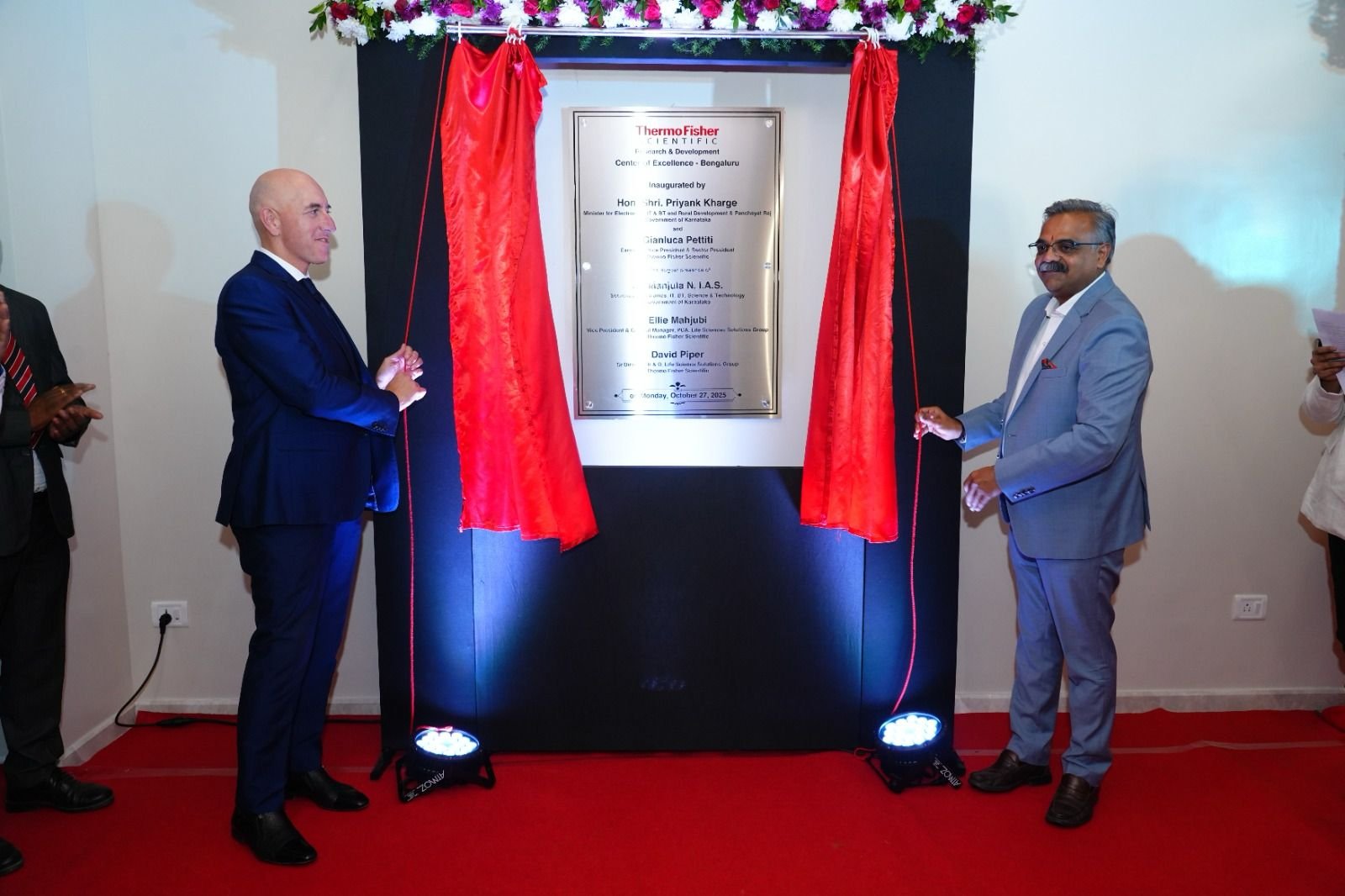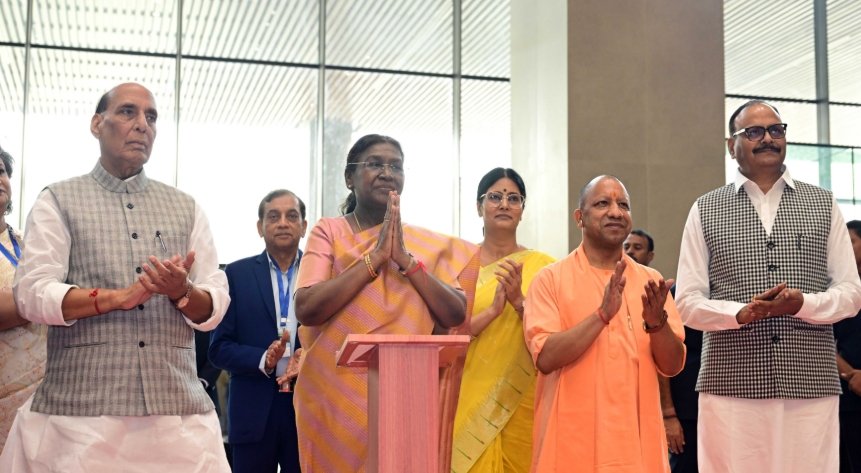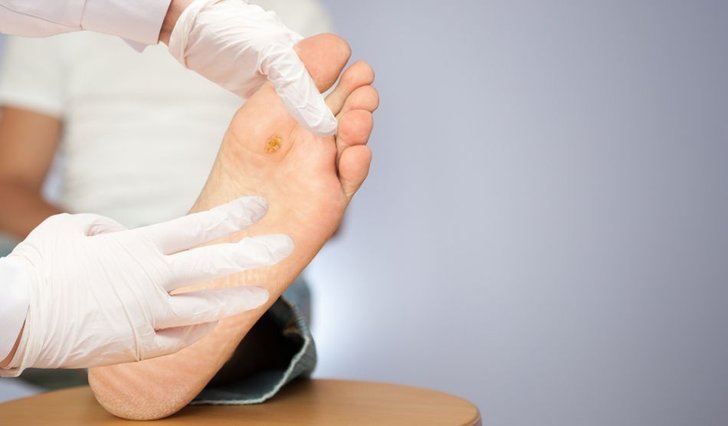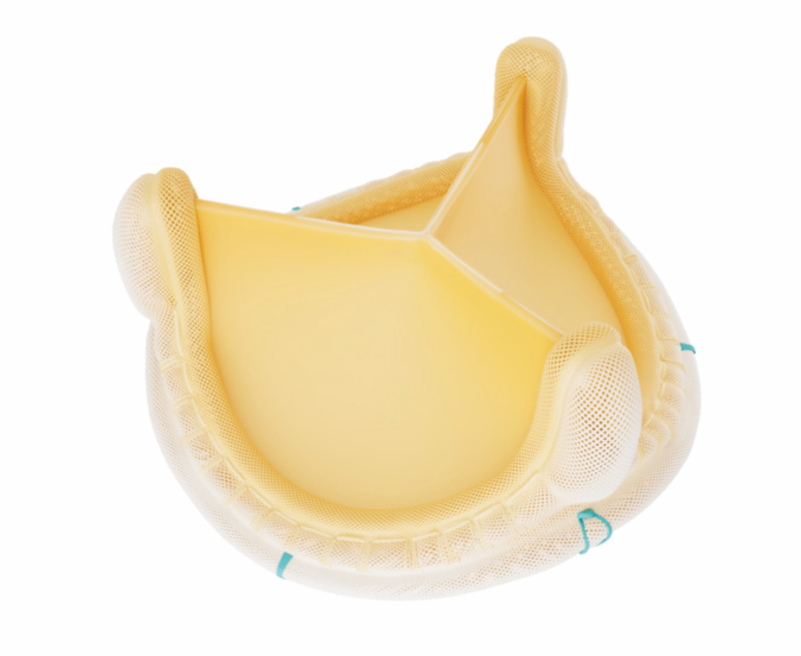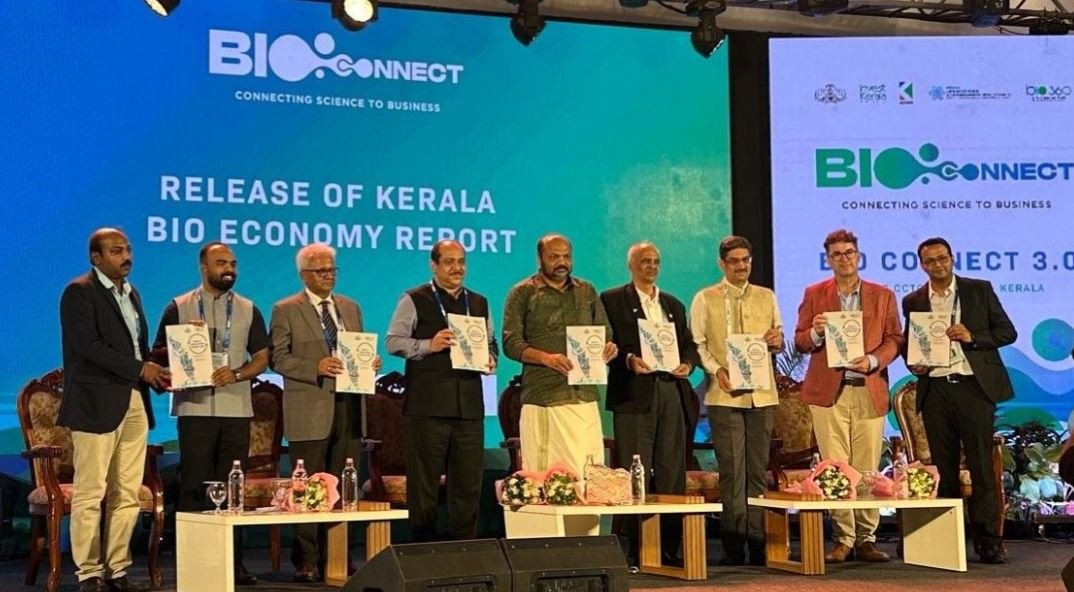Nanobiotech initiatives intensify
February 04, 2009 | Wednesday | News
Nanobiotech
initiatives intensify
Though the Indian government has announced some major initiatives to
spur new developments and deals in nanotech, technologies from the
laboratories are yet to be commercialized.
Nanotechnology in India has emerged as an area of significant interest,
both in the academia as well as in the industry. In 2007, India
launched a program to promote nanoscience and nanotechnology with a
budget of $255 million. Several public and private research institutes
are working on carbon nanotubes and nanoparticles. Considering the
strategic importance of research and development in this novel area,
the Department of Science and Technology (DST) has been encouraging
tremendous thrust on nanomaterials. The Indo-US joint forum on science
and technology has identified this area of research for intense
cooperation. Government of India’s Nanomaterials Science and
Technology Initiative (NSTI) potentially offers a venue for greater
cooperation. As part of this scheme, Government of India has plans to
spend Rs 1,000 crore on nanotechnology research and development over
the next five years.
Dr Anita Goel, chairman and CEO of the US based nanotech company
Nanobiosym said, “Nanotechnology’s ability to touch
a number of industrial sectors has led to a huge growth in the level of
discovery, investment and application over the last 10 years.
Globally, over $13.5 billion is being invested to explore the potential
for nanotechnology to impact fields such as biotechnology, materials,
construction, energy, and textiles.”
Current status
India, China, Japan, Singapore, South Korea, and Taiwan are a few
countries in Asia which have significant ongoing research projects in
nanotechnology. It is one of the main science and technology priority
areas for several government in the Asia-Pacific region. Budgets for
nanotechnology R&D have been increased substantially and are
more strategically allocated. Joseph Asantraj, CEO of the Bangalore
based nanobiotech company, Velbionanotech said, “ The total
spending for Asia-Pacific countries has exceeded $2 billion during the
last two years and this would continue to increase. Japan has been
investing in nanoscience since the 1980s and after the US is the
heaviest nanotechnology R&D spender worldwide. China, South
Korea and Taiwan have increased their budgets substantially since 2001
too.” Australia is currently formulating a national strategy,
but it already has a considerable infrastructure and funding in place.
Thailand, India and Vietnam have also identified nanotechnology as a
priority area and are taking steps to implement the proper framework.
As far as market prognosis is concerned, industry experts claim that it
is difficult to arrive at any concrete estimates.
“Nanomaterials, particularly nanoparticles and
nanocomposites, currently dominate the nanotechnology market. The
largest end-user markets for nanotechnology are environmental
remediation, electronics, energy and biomedical
applications,” said KV Subramaniam, President and CEO,
Reliance Life Sciences (RLS). The market at present is at a
nascent stage and has not yet kickstarted completely in India though
there are some products which have already been commercialized. Dr
Murali Sastry, CSO, Tata Chemicals Ltd (TCL) and a stalwart in the
field, added, “To the best of my knowledge, there are some
products marketed by one company based on nano-encapsulation developed
by Delhi University that made it to the market and it is difficult to
estimate the market for these products.”
Experts are skeptical about the pace at which research work in
nanobiotech is moving. Dr Samuel JK Abraham, Department of
Surgery,Yamanashi University-Faculty of Medicine and Director
of Chennai-based Nichi-In Centre for Regenerative Medicine (NCRM),
said, “I am not sure on how much of the research work really
is in the basic research of nanomaterials and whether we have
standardized them in taking them to biotech applications.”
Globally the scenario is just the opposite. While Subramaniam estimates
the global market at $12 billion, Dr Sastry gives a fairly lower
figure. “The global market of nanotech products in medical
applications (this would be a subset of all nanobiotech applications)
is known to be close to $1.7 billion and is projected to reach $3.8
billion in the next five years growing at an annual rate of 24 percent.
Applications of nanomaterials/technology in medical applications are
mainly in the areas of imaging, devices, diagnostics and
drugs.”
In the US and Japan, the nanotech applications are undergoing
tremendous evolutions in various fields and biotechnology is one among
them. “Japanese firms have been working for the past three
decades in the areas of proteomics, cell culture and tissue
engineering. The drug ‘Doxil’ which is now
available for cancer treatment is a real revolution,” added
Dr Abraham.
Trends
Nanobiotechnology is being considered for direct delivery of drugs into
the human body. This apart, the research trends can be numerous.
Currently, nanomaterials of different chemical compositions in
biomedical applications are pushing the growth of this market.
“There is a greater understanding of toxicity issues on the
use of nanomaterials in medical and food applications which is expected
to drive greater acceptance of nano-based products in such
applications. It is also expected that more drug-delivery nanosystems
will be approved and in the medium term, diagnostic tools
(lab-on-a-chip) will be available for commercial use,” added
Dr Sastry.
Bhuvaneashwar S, senior research analyst, Frost & Sullivan,
said, “The factors fueling growth of nanobiotechnology in
India are pretty much the same as that elsewhere in the world. Some key
trends that have been consistent across the world have been development
of novel means of drug delivery on account of properties of
nanomaterials, in vivo imaging systems which offer high potential to
study cellular metabolism and prosthetic innovations that offer better
tensile strength and resistance to the skeletal structure and
development of a customized healthcare setting in response to the
genome information overload that has brought out significant interest
in designing medication according to a person’s genetic
makeup”
Speaking specifically on regenerative medicine, Dr Abraham mentioned,
“The nanomaterials based implants using ceramics for
dentistry and orthopedics, tissue engineered cartilages and cornea are
hot topics.”
“In vitro cell culture and tissue engineering have been in
existence for the past several decades without much breakthroughs
because we haven’t changed the protocols of cell culture and
the same old biological reagents, culture media, were used without much
developments. The biological reagents, culture media, etc. are not only
expensive but being biological materials, the possibility of
contamination and lot-to-lot variation in bioavailability of the active
ingredients, which make reproducibility, are two big problems. But the
concept of synthetically produced, reproducible, biological component
and contamination free nano materials, nanosheets, films, and scaffolds
have made significant impacts. In fact PGLA (used in synthetic surgical
sutures) and hydroxy appetite (used in dentistry, orthopedics) heralded
the birth of such concept of scaffolds and now with nano-level
manipulation of synthetically produced materials which could be good
scaffolds we are able to gain significant mileage in bringing expected
results in cell culture and tissue engineering,” Dr
Abraham added.
“There are myriad factors pushing the growth of this market.
Drug delivery vehicles for targeted and sustained delivery of drugs to
minimize size effects; better and more reliable tools for early and
rapid detection of diseases; development of tools for probing cellular
processes in real time (more academic at the moment); nanotech based
materials for medical implants and perhaps much less appreciated; and
nanomaterials/processes in agriculture and food products. The range of
applications also underlines the fact that nanotechnology is an
enabling technology rather than a stand-alone one,” pointed
out Dr Sastry.
VC funding
Giving the fact that nanobiotech is a high risk venture, venture
capitalists are hesitant to invest in this field. The problem is
compounded further as their understanding and views on the subject are
a bit blurred. “They are vary of nanotech as a whole and
until greater clarity on potential side effects of nanomaterials in
medical and food applications become clearer, they may be vary of large
investments in nanobiotechnology as well,” revealed Dr
Sastry.
However Indian companies and research institutes have been fortunate to
receive monetary investments to augment their respective projects. Dr
Abraham of NCRM mentioned, “Our organization is an
Indo-Japanese firm funded mainly by our Japanese
collaborators.”
Mumbai-based Virtus Technoinnovation Pvt Ltd, is a player in gene
repair therapy. According to its CEO, Dr Tripathi Virtus has signed a
MoU with an NRI investor for the use of gene repair therapy
as a tailored SPA for rejuvenation of skin, heart, kidney, lever,
nails, hair and eyes. Dr Tripathi has received Rs 2 crore as
technology fees and a 55 percent share in the SPA company which is
likely to be launched by March 2009 in Mumbai. “Venture
capitalists are already approaching us with high valuation for
replacing 70,000 SPAs globally with yearly revenue of $250 billion.
India’s share currently is $35 million revenue. One can see
the ocean of opportunity when the entire $252 billion of business is
likely to turn to India for cost effectiveness and now for the
differentiated SPA technology,” informed Dr Tripathi.
The recession effect
Global recession in general is affecting capital inflows to all sectors
of economy and nanotechnology is no exception. “ The
recession is adversely affecting all the ongoing projects and certainly
the new projects. Venture capitalists are averse to investing in
riskier areas like nanobiotechnology. The only projects that would
still continue are those funded by government organizations,”
opined Subramaniam.
Speaking on the same issue Dr Abraham said, “We
don’t feel the recession because our research has been going
on for the past 20 years and we have developed several applications
which themselves are taking care of our research funds. We recently
transferred our technology to start a center in Malaysia.”
Dr Sastry confirmed, “Yes, there is a delay in the inflow of
funds but this has not stopped research work. “There is a
temptation to cut funding in research in whatever field during economic
downturn times but the companies and investors with a vision step up
investment in asset-light and knowledge-heavy possibilities such as
nanobiotech.”
Government stimulation
Government of India has given considerable thrust to nanoscience
and nanotechnology in the recent years. The allocation for
the research and development on this technology has increased
significantly in the last few years. The national mission on
nano-science and nano-technology has been formulated. India has
established several nanotechnology programs under its five-year
nanotechnology initiative. The government recently announced a $255
million program that includes three national institutes for
nanoscience. Two centers of excellence in nanotechnology are being set
up in Bangalore and in Mumbai. India has also launched a national
program focusing on micro and smart systems and a network program on
nanoscience overseen by government-owned R&D agencies.
India has also formed the Vision Group consisting of about a dozen
researchers from academia, industry and research spheres to develop a
national nanotechnology policy. The Department of Science and
Technology is backing the Nanotech Mission by providing Rs 50 lakh
special grant for nanotech start-ups. It has set aside nearly Rs 1, 000
crore as funds for R&D labs and the academia as part of its
nanoscience and technology initiative. Last year, a 14-acre
nanotechnology research center was opened at JNCASR near
Jakkur in Bangalore.
The Government of India through the DST and DBT is funding a
number of projects in the nanobiotech area. Incubators to promote
entrepreneurship in nanotech have also been created at select academic
institutes and national laboratories. In addition to this, soft loans
to entrepreneurs are also being provided. “The Government of
India is taking multiple steps to make India a leader in this emerging
area of science and technology. Towards this, the government launched a
‘Nano science & Nanotechnology initiative
(NSTI)’ program for encouraging research in nanotechnology.
Under NSTI, many R&D projects have been supported in the areas
of nanofabrication, nanolithography, DNA chips, nanocomposites,
molecular electronics, nanosensors, drug delivery, carbon nanotubes and
wires etc. They have also established multiple centers of excellence
and core groups in nanoscience. Recently, the Indian government
announced setting up India’s first premier
‘Nano-institute’, the Institute of Nano Science and
Technology, in Bangalore, under the guidance of Jawaharlal Nehru Centre
for Advanced Scientific Research,” said Subramaniam.
Dr Abraham however gives a different perspective. He shared,
“We haven’t received any direct funding from the
government. But our collaborating institute, Institute of Pathology,
ICMR has received funds for a joint research and a few other proposals
are under scrutiny for funding.”
Looking ahead
Though the Indian government is making some major investments
in nano, apparently in response to its potential to revolutionize
diverse industries like biotech, pharmaceuticals, IT, catalysts, and
surface coatings. Yet, the absence of a well defined national nanotech
policy, inflexible institutional system and a lack of capital
funding may prove to be a stumbling block for long-term progress of
nanoscience in the country. The day government introduces attractive
feed-in tariffs, incentives to industries coupled with a national
policy, nanotechnology can become the next booming industry in India
after IT and biotech.
Jahanara Parveen with
Nayantara Som and Shalini Gupta


